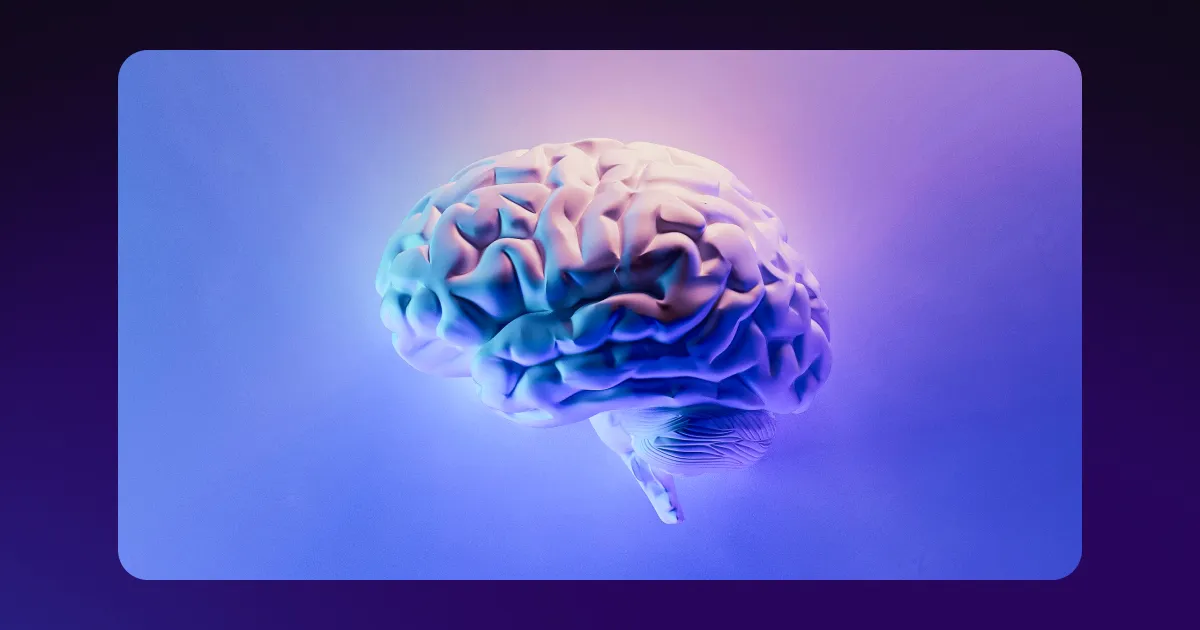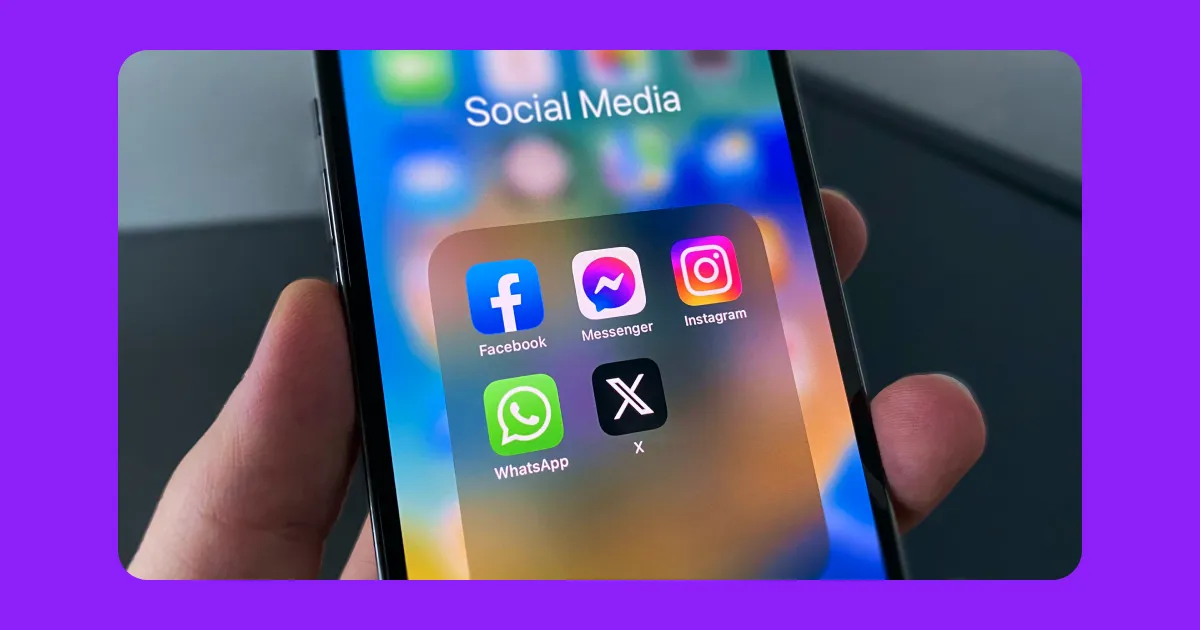9 Types of AI Content Creators Should Know
Artificial intelligence (AI) technologies power countless tools that make content creation faster and easier. Each type of AI works differently: Some handle just one task very well, like generating images or videos, while others can learn and improve across many areas. Knowing the differences helps you pick the right AI tools that actually save you time instead of creating more work.
This guide explores the major types of AI behind today's most powerful tools, helping you make smarter choices about which technologies will work best for your creative process.
6 Key Types of AI
AI technologies fall into different categories based on what they can do and how they work. Here are six key types of AI based on their capabilities and functionality.
Types of AI Based on Capabilities
1. Narrow AI
Narrow AI is built to do one specific task well, like generating captions or editing video. Some use machine learning, while others follow fixed rules without learning at all. They're incredibly effective at their specific jobs but can't transfer skills to other areas.
Popular narrow AI applications include voiceover generators like ElevenLabs, chatbots like OpenAI’s ChatGPT, and recommendation systems on streaming platforms.
2. Artificial General Intelligence (AGI)
Artificial general intelligence doesn't exist yet, but this level of AI would match human-level intelligence across multiple fields. While narrow AI sticks to one particular area, AGI would be able to understand concepts, learn new skills independently, and solve novel problems.
Researchers are working toward this future, but significant breakthroughs in neural networks and deep learning will need to occur before AGI becomes a reality (if ever).
3. Superintelligent AI
Superintelligent AI is another theoretical system that would exceed human intelligence rather than match it. Building on AGI capabilities, this form of AI would outperform humans in creativity, logic, and even social understanding. While it might learn and improve on its own, the idea that it could become self-aware is just speculation for now. Current AI systems are still far from this level of intelligence.
Types of AI Based on Functionality
1. Reactive Machine AI
Reactive machine AI is a type of narrow AI that works only in the present moment without any memory of past actions. It follows preprogrammed rules and can't learn from experience or remember past interactions. While powerful in narrow contexts, these systems can't improve through experience, making them less useful for adaptive content creation tasks.
The IBM Deep Blue chess computer that defeated world champion Garry Kasparov is a famous example of reactive machine AI.
2. Theory of Mind AI
This theoretical type of AI would understand human thoughts, beliefs, and intentions. If developed successfully, these models would recognize that others have their own perspectives and emotions, enabling users to have human-like relationships with the AI tools.
3. Self-Aware AI
Self-aware AI is another hypothetical system with consciousness and a personal identity. This type of AI would possess independent thoughts, emotions, and awareness of its own (and others') existence.
This purely theoretical concept exists only in science fiction today. Like AGI and superintelligent AI, the gap between current AI systems and truly self-aware ones is vast.
3 Additional Types of AI
These additional types aren't part of the core classifications by capability or functionality, but they'll still help you understand the field better.
1. Evolutionary AI
Evolutionary AI borrows ideas from biology to solve complex problems. These systems test many solutions, keep the ones that work best, and repeat the process to gradually improve results, similar to natural selection.
This approach may outperform traditional programming processes. Evolutionary AI software often finds creative solutions by exploring options humans might overlook.
2. Symbolic AI
Symbolic AI works with clear rules and logic instead of learning from data. Systems often use if-then statements and knowledge databases to make decisions you can easily trace and understand.
In content creation, symbolic AI might follow rules like, "If the post is about a product launch, include the product name and features."
3. Hybrid Intelligence AI
Hybrid intelligence pairs human creativity with AI processing power. These systems combine what people do best, like creative thinking and understanding emotional nuance, with AI's advantages of speed, consistency, and pattern recognition.
For content creators and creative marketing professionals, hybrid approaches can help you achieve the best results. You keep creative control while AI handles repetitive tasks and technical heavy lifting.
Key AI Applications Across Industries
AI has already had a huge impact on various industries. Here are some of the more interesting cases.
Content Creation
AI has transformed content production by automating tedious tasks and boosting users’ creativity. Today's AI tools can handle time-consuming duties like video editing and generating captions with minimal human input. Some of these tools can also learn your preferences over time, becoming more valuable as they adapt to your specific style.
The best way to add AI tools to your existing content creation process is with Captions. Our creative studio runs on the latest AI technology to improve the video creation process. Here are just some of the benefits of our platform:
- Streamlined content generation — We’ve partnered with the top AI parent companies to give subscribers access to the best models in one place. Create music, sound effects, B-roll, voiceovers, and images from a single dashboard.
- Automated editing — Simply upload your footage, set your style preferences, and let the AI take care of editing. It’ll do tasks like inserting scene transitions and adding captions in minutes.
- Improved marketing — Generate ad ideas, put together complete marketing campaigns, and let AI manage your social media presence.
By adding these tools to your process, you’ll save time and create better content faster.
Shipping
AI improves shipping by creating smarter routes and managing resources better. ML tools analyze traffic patterns and delivery needs to plan more efficient transportation. For example, Uber Freight reduced empty miles — when trucks drive without cargo — by 10–15%, saving time and money.
Medicine Development
AI helps researchers find new medications faster by quickly scanning massive datasets to identify potential treatment candidates. These tools can spot promising options for human trials that researchers might otherwise miss or take years and millions of dollars to discover.
Education
AI helps teachers customize learning for students with different needs by offering tools like real-time one-on-one tutoring. Students can learn at their own pace, while teachers focus on providing support and encouragement where they’re needed most. Using AI at school is also effective — 55% of teachers say these tools have improved educational outcomes.
Streamline Your AI Video Editing Process With Captions
Understanding the different types of AI helps you choose the right tools for your content creation workflow. Captions doesn’t make you pick between models, as we’ve partnered with several AI companies to bring you the best tools in one platform.
With integrations with some of the most popular generative AI tools like DALL-E 3 and Stable Diffusion, you can skip the shooting and create images and videos based on simple text prompts describing your vision.
Stop wrestling with complex editing software and start focusing on bringing your ideas to life with Captions.
FAQ
What's the Difference Between Narrow AI vs. General AI?
Narrow AI does one job well but can't handle other tasks, while general AI works across many different areas without specific training for each duty. You can think of narrow AI as a specialist and general AI as a jack of all trades.
What Type of AI Is ChatGPT?
ChatGPT is a classic example of narrow AI. It uses natural language processing techniques for tasks like writing emails and summarizing articles, but it doesn’t truly understand or reason like a human. It mimics reasoning based on patterns in the data it trained on.
What's the Most Common Type of AI?
Narrow AI is the most common type used today. You'll find it in voice recognition assistant apps like Siri, image generation tools, and recommendation engines on platforms like Netflix.
How Does AI Benefit Content Creators?
AI gives content creators a major productivity boost. Instead of spending hours on technical tasks like transcribing audio or organizing footage, AI handles these jobs in minutes. This frees up time for the creative work that actually requires a human touch.









